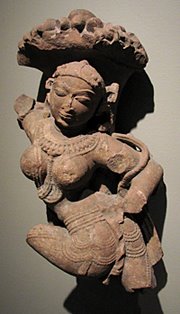 The Dawkins Delusion: Atheist Fundamentalism and the Denial of the Divine
The Dawkins Delusion: Atheist Fundamentalism and the Denial of the Divine by Alister McGrath and Joanna Collicutt McGrath. Though I hold a naturalistic world view, do not share the beliefs of any organized religion, and have been a long-time fan and admirer of Richard Dawkins’s science writing, I was surprised and disappointed with his book on atheism,
The God Delusion. It is an ill-conceived and poorly researched polemic against religion, primarily Christianity, that does no credit to Richard Dawkins or atheism in general. Instead, the book showcases an accomplished science writer lowering himself to the level of a TV “shock-jock,” exhibiting the same lack of concern for accuracy, and the same simplistic, narrow-minded orientation.
The McGraths offer a much-needed response in this succinct and intelligent book, which I noticed in the New Books section of the Kansas City Public Library a few weekends ago. At 118 pages, including end notes, annotated bibliography, and author profiles, it is not a lengthy reading project. In their introduction the authors explain they do not intend a point-by-point rebuttal of all the inaccuracies, misstatements, and mistakes in
The God Delusion, which would be tedious indeed given the long list of blunders it contains. Their approach, instead, is to challenge Dawkins “at representative points and let readers draw their own conclusions about the overall reliability of his evidence and judgment.” (p 13)
Their challenges are presented in four chapters, “Deluded About God?,” which critiques the distorted characterization of contemporary religious belief Dawkins presents; “Has Science Disproved God?” which explores scientism (a worldview insisting only scientific investigation can provide reliable knowledge) and takes exception with Dawkins’s argument that the vast majority of scientists are atheists; “What are the Origins of Religion” highlights gross mischaracterizations by Dawkins about research on the historical origins of religion and also demonstrates Dawkins’s conclusions about it have no evidentiary basis and are, in fact, nothing more than uninformed speculation; and “Is Religion Evil?,” which provides a balanced view of the healthy and unhealthy aspects of religious belief, as well as other sociological processes that can also lead to violence.
These chapters are not constructed as comprehensive arguments, but provide general overviews of the topics covered and direct readers to more detailed resources for further reading and evaluation. Alister McGrath, the principal author, has a tendency to repetition with increasingly emphatic statements. One rather imagines him typing away at the word processor, becoming more and more heated by some particularly irksome inanity in Dawkins’s book, pounding the keyboard with more and more force, until Joanna pokes her head into the study with a mildly admonishing “Alister, perhaps it’s time for some tea?”
One passage I found telling occurs in the chapter on the origins of religion. The authors discuss cognitive biases which “predispose us to fail to notice or to discount data that are inconsistent with our view. On the whole we do this because it is efficient — it takes effort and is upsetting to have to change one’s mind — even if change is in a positive direction.”
The God Delusion is then presented as an example of such bias. “Without full awareness that he is doing so, Dawkins foregrounds evidence that fits his own views and discounts or distorts evidence that does not.” (p 62)
This struck me because I have had difficulty accounting for how an experienced science writer with a reputation for accuracy could distort and misrepresent so many reference sources. While reading the book, I began obtaining some of Dawkins’s references and found that he frequently does misrepresent them. Just one salient example is Max Jammer’s
Einstein and Religion, which Dawkins uses to support a statement that Einstein was “repeatedly indignant” about being described as a theist; that is, one who believes in God (Dawkins, p 18). Jammer’s book demonstrates exactly the opposite: Einstein was repeatedly indignant about being described as an atheist. “In view of such harmony in the cosmos which I, with my limited human mind, am able to recognize, there are yet people who say there is no God. But what really makes me angry is that they quote me for support of such views.” (Jammer, p 97)
Such problems, and this is only one of many examples, demonstrate that Dawkins’s position regarding atheism is so strongly biased he cannot be objective about the evidence. He can’t even read references accurately.
Einstein’s phrase, the “harmony of the cosmos,” recalls another passage from
The Dawkins Delusion, which sites an argument for the existence of God, as phrased by Richard Swinburne, “that the intelligibility of the universe itself requires an explanation.” In other words, what can account for the natural order of the cosmos which science has been so effective at discovering? Answers to this question seem clearly beyond the realm of science. Is faith not a legitimate response? Earlier in their book, the McGraths observe that much of the available evidence supports both atheistic and theistic interpretations. Fundamentalists on either side of the argument deny this, but the observation should give pause for thought to readers with more moderate views.




















